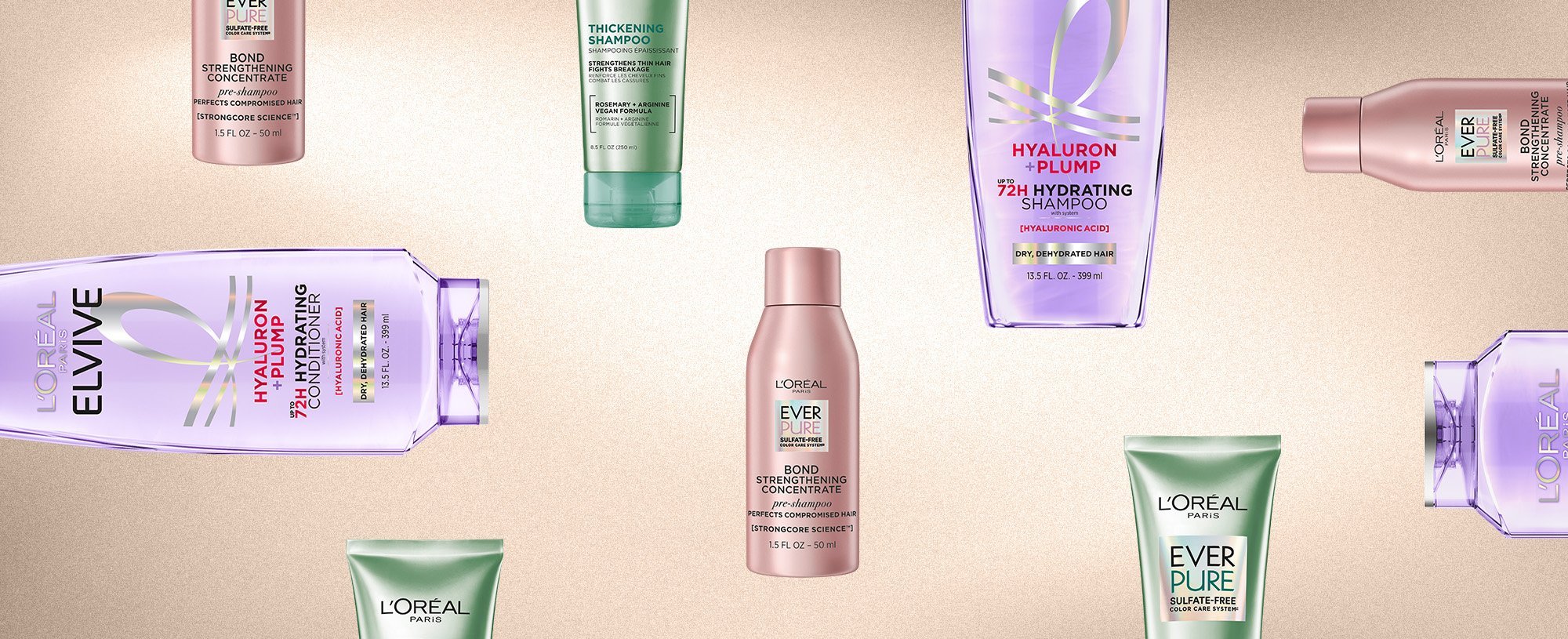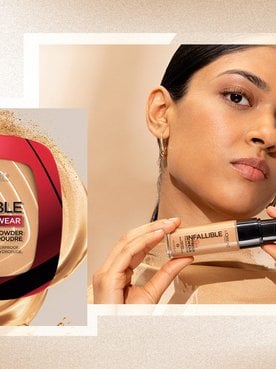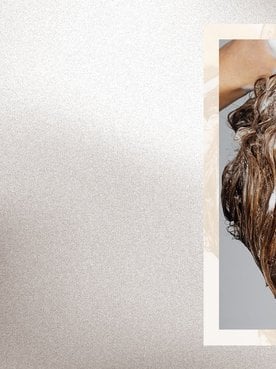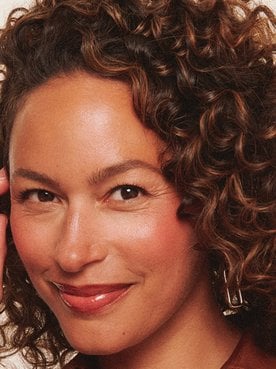If you have coily hair, you know it often requires extra care—and that’s especially true for 4C hair, the tightest and most delicate natural hair type. Its densely packed coils give this natural hair type plenty of volume, but it’s also prone to dryness, breakage, and a lack of definition. Because of this, caring for 4C hair often requires following a tailored routine focused on hydration and protection.
Ahead, we’ll break down what makes 4C hair unique and share practical tips for keeping it healthy and strong. Keep reading to discover how to care for your coils and discover some of our favorite hair products for type 4C hair.
What Is 4C Hair?
Hair textures are typically categorized into four main types, each with three subcategories. 1A is the finest and straightest hair type, while 4C hair falls on the other end of the spectrum. This natural hair type is characterized by the presence of dense, tightly-packed coils roughly the diameter of a knitting needle. Unlike curls, which tend to be rounded, 4C coils often have a distinct zigzag shape.
Because of the tightly packed nature of 4C hair, oils from the scalp have a harder time traveling down the hair shaft. As a result, those with 4C hair often struggle with dryness, especially at the mid-lengths and ends. 4C hair can also be prone to damage and breakage, which is why maintaining a dedicated haircare routine designed to protect those delicate strands is so essential.
Daily and Weekly Care Tips for 4C Hair
Caring for damage-prone coils requires a thoughtful approach that prioritizes hydration and protection. Keep reading to learn how to manage 4C hair for nourished, healthy-looking coils.
1. Avoid over-washing
How often you need to wash your hair depends on several factors, including your hair type and lifestyle. However, with coily hair, a less-is-more approach is usually ideal. Washing your hair too frequently can strip your hair of protective oils, leaving it vulnerable to dryness and breakage. To keep your 4C hair in great shape, aim to shampoo once a week at most. When you do lather up, be sure to use a gentle, hydrating shampoo (or even a co-wash) to avoid over-drying your delicate strands. We like the L’Oréal Paris EverPure Sulfate-Free Moisture Shampoo and coordinating Conditioner.

2. Moisturize, moisturize, moisturize
Not to belabor the point, but if there’s one thing 4C hair needs, it’s moisture—and lots of it. One of the best ways to lock in moisture and keep the hair hydrated is by layering haircare products.
If you have low-porosity hair, the LOC method is best. This approach involves layering a leave-in conditioner, a hair oil, and a cream (in that order) to help hydrate the hair. For those with high-porosity hair, a slightly different approach—the LCO method—is often recommended. With this technique, products are layered from thinnest to thickest to help trap moisture within the strands.
Both techniques can help fend off dryness, minimize breakage, and promote healthy-looking curls and coils. If you’re unsure which approach is best for you, consult your hairstylist—they can help you determine your hair’s porosity and recommend a layering technique that addresses your unique needs.
3. Detangle with care
If you find your hair has become knotted or tangled, resist the urge to break out the hairbrush—brushing your hair will likely just end up damaging your delicate strands. Instead, apply a detangling leave-in product and gently loosen knots with a wide-toothed comb while your mane is damp. This will allow you to untangle any stubborn knots without risking widespread damage or breakage.
4. Try a protective hairstyle
Protective hairstyles are pretty much exactly what they sound like: hairstyles designed specifically to protect the hair against unnecessary manipulation. Usually, protective styles are worn for a few weeks at a time. This allows the wearer to maintain a consistent look without having to re-style their hair each day, minimizing potential stress caused by combing or heat-styling the hair.
Shop the Products
What Products Should You Use for 4C Hair?
An effective 4C hair routine involves hydrating the hair and applying products that help lock in moisture while fending off frizz and damage. With that in mind, make sure your routine includes the following hair products for 4C hair:
1. Sulfate-free shampoo and conditioner
When wash day comes around, reach for a gentle shampoo that can remove excess oil and debris without stripping your hair of much-needed moisture. The moisturizing shampoo and conditioner duo we mentioned above are great picks for all drier hair types, but if you’re looking for dedicated 4C haircare products, try the L’Oréal Paris EverPure Sulfate-Free Curl Shampoo and Conditioner. The coconut oil-infused duo is designed specifically for textured hair and delivers intense hydration for long-lasting frizz control and definition.

2. Deep conditioning treatment
For added TLC, follow up with a deep conditioner to replenish your hair and lock in moisture. We’re big fans of the L’Oréal Paris Elvive Total Repair 5 Power Restore Multi-Use Treatment. Each jar of the thick, rich mask contains 91 grams of a repair concentrate with protein to help care for brittle, damaged strands. Apply a generous amount to your mane in the shower and rinse off, use the multi-purpose treatment as a co-wash between shampoos, or work a small amount throughout your strands when styling for lasting hydration and protection.
Shop the Products
3. Strengthening treatment
If your 4C hair is especially brittle, you may want to consider adding a strengthening treatment to your routine. One option that works well for all hair types is the L’Oréal Paris EverPure Bond Strengthening Pre-Shampoo Treatment. As the name implies, this treatment is meant to be applied before shampooing your hair on wash day. Work a generous amount throughout wet hair, let it sit for five to 10 minutes, then rinse (proceed with your shampoo and conditioner as usual). The unique treatment helps reinforce weak, brittle hair bonds, leaving your strands strong, smooth, and more resilient.

4. Lightweight leave-in
You can probably already guess what your post-shower 4C haircare routine should include: more moisture. Leave-in conditioning sprays, creams, oils, and serums can all be good products for 4C hair, so choose what works best for your needs.
If you’re following the LOC or LCO methods, start with a leave-in conditioner, such as the L’Oréal Paris Elvive Dream Lengths Curls Leave-In Conditioner. The lightweight formula with hyaluronic acid and castor oil helps seal in hydration, fight frizz, and boost definition for bouncy coils without any weigh-down. After that, apply your leave-in hair oil creams as dictated by your hair’s porosity. Don’t forget to use a heat protectant if you plan on blow-drying or heat-styling your hair to help shield your strands against damage. For a two-in-one option that checks all of the boxes, we love the L’Oréal Paris EverPure Bond Repair Hair Oil-in-Serum.
5. Flexible-hold styling aid
Last but not least, you’ll want a styling gel or cream to help define your coils (and keep them defined). Styling products for 4C hair should offer hold while still allowing for movement—that’s key, because you don’t want your hair to look or feel stiff. The L’Oréal Paris Elnett Anti-Frizz Slick Back Hair Styling Cream gets our vote—it’s lightweight, residue-free, and offers up to 24 hours of flexible hold and frizz control.
Shop the Products
5 Protective Hairstyles for 4C Hair
On days you don’t want to wear your hair natural, there are plenty of gorgeous protective styles to choose from. Below, find some of our favorite protective hairstyles 4C hair.
1. Cornrows
Cornrows are a popular hairstyle that involves braiding the hair very close to the scalp in neat, raised rows. The braids usually run straight back, but can be styled into intricate patterns or shapes. You can even have your stylist weave extensions into your locs to add length (or even color) to your mane.
Bantu knots aren’t knots at all, but small, twisted buns placed around the circumference of the head. Like most protective styles, they can be worn for up to two weeks at a time or longer with proper care. To keep oiliness to a minimum, gently wash your scalp with your chosen shampoo or use a clarifying scalp treatment like the L’Oréal Paris Elvive Hyaluron + Pure Oil-Erasing Serum once weekly.
3. Micro locs
One of our favorite hairstyles for short 4C natural hair, micro locs involves rolling small sections of hair into thin, rope-like twists. The style is as low-maintenance as traditional dreadlocks, and can easily be done at home—no salon visit required. Simply divide your hair into one-inch sections and tightly twist each (use a gel like the L’Oréal Paris Studio Line Above It All Invisa-Gel for added hold) until your entire head is covered in the miniature twists.
4. Box braids
If you are willing to hit the salon, box braids are another excellent hairstyle for natural short 4C hair. The look involves separating your hair into equally spaced, square-shaped sections, then plaiting each into a classic three-strand braid. If you’re having your stylist add extensions for length, be sure to ask for knotless box braids—they tend to put less tension on the scalp than tighter knotted styles.
5. Passion twists
Passion twists are ideal for those who want to maintain the look of curls or coils while minimizing maintenance (and streamlining their styling routine). To create the bohemian look, your stylist will divide your hair into sections, then twist each with braiding hair to create a springy, coiled look. Thicker passion twists take less time to do and tend to be more voluminous, while thinner passion twists make for a gorgeous, textured style (but take more time to create). Whichever you choose, be sure to protect your mane at night by covering your hair with a silk bonnet and sleeping on a satin pillowcase.
Shop the Products
Next Up: How To Do Box Braids at Home in 6 Easy Steps
Photo courtesy of L’Oréal Paris







